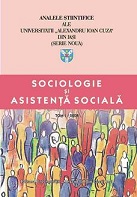ADAPTATION STRATEGIES OF THE ELDERLY MIGRANTS IN DESTINATION COUNTRIES – A QUALITATIVE ANALYSIS
ADAPTATION STRATEGIES OF THE ELDERLY MIGRANTS IN DESTINATION COUNTRIES – A QUALITATIVE ANALYSIS
Author(s): Adrian Lucian LupuSubject(s): Social Sciences
Published by: Editura Universităţii »Alexandru Ioan Cuza« din Iaşi
Keywords: adaptation strategies; elderly migrants; social life; social services; migration patterns
Summary/Abstract: Romania faced four main emigration waves so far, and most Romanian immigrants went to western European countries (Ulrich et al., 2011). The phenomenon deeply affects the Romanian society and generates unbalances in the demographic structure and on the labor market, implicitly, (Sandu, 2005, 2006, 2009; Bodvarsson, and Van Den Berg, 2009). For instance, there are localities especially in rural areas where over 50% of the population migrated and formed compact groups in various sites in destination countries. This has several negative effects: ageing of population (Black and Sward, 2009), the decrease in active work force, family structure dysfunctions, increased dependency on social services, etc (Bolzman et al., 2006). The objectives of the study are as follows: 1. Identifying migration models and patterns specific to persons over 60; and 2. Identifying the adaptation strategies used in the countries of arrival and the resources mobilized within the adaptation process. The method used in this study is based on a grounded-theory type of approach (Strauss and Corbin, 1990; Creswell, 2007) and it involved the application of interviews to persons over 60 who went through a migration experience.
- Issue Year: 8/2015
- Issue No: 2
- Page Range: 101 - 112
- Page Count: 12
- Language: English

